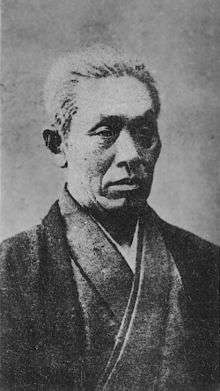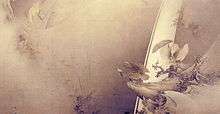Kanō Hōgai

Kanō Hōgai (狩野 芳崖, February 27, 1828 – November 5, 1888) was a 19th-century Japanese painter of the Kanō school. One of the last of the Kanō painters, Hōgai's works reflect the deep traditions of the school, but also at times show hints of experimentation with Western methods and styles. Like his predecessors, Hōgai painted a variety of subjects, but is perhaps most well known for his paintings of falcons, and of dragons.

The son of the local daimyo's chief painter, he was sent at the age of 18 to Edo to study painting formally. He would stay there for ten years, and study under Kanō Shōsen'in and other great artists of the time. Hōgai would eventually be called upon for such esteemed commissions as ceiling paintings for Edo Castle. He also received the honor of having some of his works displayed at the 1876 Paris International Exposition.
However, despite these honors, the economic turmoil created by the fall of the shogunate in 1868 forced Hōgai to seek to support himself with income via more mundane methods. He worked casting iron, reclaiming land, and running a shop selling writing instruments. In 1877 Hōgai returned to Edo, now called Tokyo, and worked for the wealthy Shimazu clan; this gave him the opportunity to study works by some of Japan's greatest painting masters, including Sesshū and Sesson.
In 1884, Hōgai attracted the attention of Ernest Fenollosa, an art critic and collector from New England, who befriended him and bought several of his paintings. Along with Fenollosa, Okakura Kakuzō and Hashimoto Gahō, Hōgai then took part in a Painting Appreciation Society (観画会, kangakai). The Society was created to draw attention to the traditional Japanese arts, particularly classical art of the Heian and Nara periods which was beginning to be seriously neglected, many works sold or even destroyed due to Japan's newfound interest in the West.
References
- Baekeland, Frederick (1985). "Kanō Hōgai." Kodansha Encyclopedia of Japan. Tokyo: Kodansha Ltd.
|